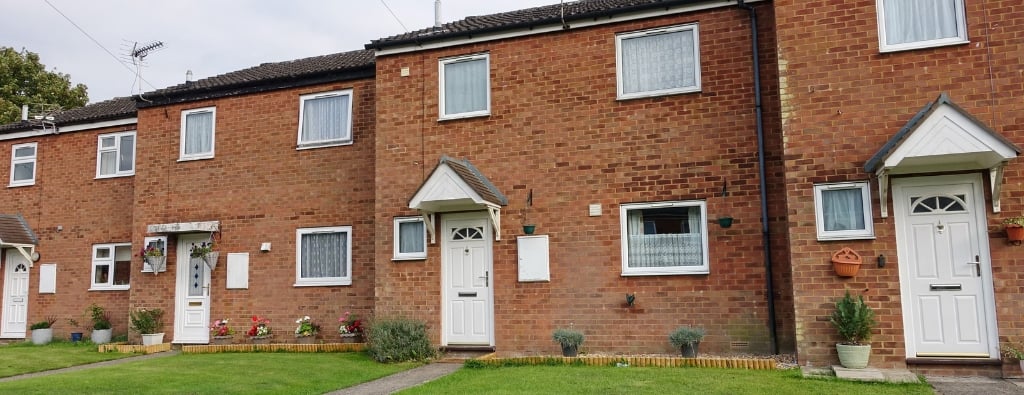In times of hardship, teach yourself to be resilient! Covid-19, the war in Ukraine, the energy crisis and growing inflation have profoundly marked the UK housing sector. And although it hasn’t been easy, housing associations have shown their resilience in rapidly moving to a digital-first approach in many areas of their work, managing to stay afloat. Why is it important?
For many years now, housing in the UK has been a chronic public policy problem. The housing sector is critical to the macroeconomy. Recent figures (2021) suggest that the housing stock is worth £8.4 trillion, outstanding mortgage debt is £316 billion, and household property wealth (mainly housing) is 31% of total wealth (2016-18).
Housing associations play an important role in the economy of the sector, with an annual 2021 turnover of £394 Million, according to the Northern Ireland Federation of Housing Associations (NIFHA). Over 4.4 million homes across England are provided through a Housing Association, supplying affordable homes and services to millions of individuals. Yet, the challenges they are facing are countless, and we will walk you through some of the most important ones in this article. But first, let’s try to understand more about what they are and what their purpose is.
What Are Housing Associations?
A housing association is an independent, not-for-profit social business that provides both homes and support for people in housing need, as well as key community services. They can vary in size from those with fewer than 100 homes to those providing more than 5,000, and they are major providers of social and affordable housing.
These organizations are typically funded by the government, charitable donations, or private investments. They are generally addressed to people who need affordable housing, such as low-income families, disabled individuals, and the elderly. They often have specific criteria for eligibility, such as income limits, residency requirements, or social needs.
For example, 54% of the housing association tenants have a long-term illness or impairment, while 18% of new lettings are for people with a defined disability. Overall, 43% of them are 55 and over, with an average age of 52.
Housing associations also work to build strong communities, investing significantly in neighbourhood services, ranging from anti-social behaviour initiatives to supported employment programmes and IT classes. Ultimately, housing associations make communities better places to live and are important partners for the public sector and community organisations.
With the UK now facing an economic environment with high inflation and low but increasing interest rate, the housing sector is taking the full blow. The supply chain disruption and staff shortage continue to impact the price and availability of goods and services in the sector, without forgetting the impact that Brexit is having. The major concerns are around the economic uncertainty and frictionless trade needed to secure finance and materials for new housing development, such as an increase in the cost of materials; delay in importing materials; the loss of EU funding; the shortage in both skilled and unskilled professionals. Moreover, there aren’t enough homes, especially low-cost ones, and the existing housing stock lacks proper maintenance, especially in the private sector. Let’s have a closer look at what these risks imply for the housing associations in the UK.

What Are the Biggest Challenges that Housing Associations Are Facing?
Funding
Housing associations rely on a range of funding sources, including government grants, private investments, and charitable donations. However, funding can be uncertain and unpredictable, which can make it difficult for housing associations to plan for the future and invest in new projects. To such an extent that associations are taking on more debt to fund strategic objectives, such as investing in both new and existing housing stock. This has resulted in weaker projected operating margins and lower interest cover, only partially alleviated by low-interest rates.
Regulatory and Policy Changes
Housing associations are subject to regulatory and policy changes, which can impact their operations and funding. The Regulator of Social Housing (RSH) regulates registered social housing providers, including local authorities and housing associations. It is a stand-alone non-departmental public body of government which sets consumer and economic standards for social housing providers and can take action if these are breached.
Changes in government policies or regulations can have significant effects on housing associations' ability to provide affordable housing and support services. For example, housing associations are navigating new building safety regulations, the social housing white paper, the calling on the sector to step up and work towards the commitment of achieving net zero carbon emission by 2050, and a significantly changed National Housing Federation Code of Governance. All of these have a clear focus on tenants’ needs and safety.
Limited Availability of Affordable Housing
The demand for affordable housing often exceeds the supply, and many people may be on waiting lists for housing for long periods of time. Housing associations may struggle to keep up with the demand, especially in areas with high housing costs.
The difficulty in getting hold of construction materials is not quite as great a problem as the increased costs of those that are available. 95% of the social housing associations cite increased costs as having a significant impact on their finances – a marked rise in the last two years – and 77% say they are struggling to source basic supplies, even for things like repairs to heating systems. Which is hardly good news for any planned new housing projects!
Maintenance and Repairs
Housing associations are responsible for maintaining and repairing their properties, which can be costly and time-consuming. As properties age, maintenance costs can increase, and housing associations may struggle to keep up with repairs while also providing affordable housing.
Access to Labour and Skills
In the face of substantial shortages in key staff and high staff turnover, housing associations offering support and care services are frequently increasingly reliant on high numbers of bank staff to deliver services, potentially imperilling high-quality care and delivery of services in line with contractual targets. Not less than 66% of the social housing associations are faced with labour shortages.
Providers enter contracts with a wide range of third parties, including funders, insurers, auditors, pension providers, construction and maintenance contractors, care providers and through joint ventures. These can represent effective ways for providers to deliver key services and help deliver value for money. However, entering contracts with third parties exposes providers to counterparty risks and can reduce the control that providers have over the quality of delivered services and trigger reputational risks.
Delivery Against High Expectations
The housing associations will need to navigate a range of competing demands from multiple stakeholders. These include current and future tenants, local communities, local and national governments, lenders, contractors, other regulators, and the media. Failure to ensure homes are maintained at a decent standard or to effectively respond when issues arise can result in significant consequences for tenants, as well as substantial implications for the trust and confidence that tenants and other stakeholders have in a provider. Furthermore, instances of poor quality or service delivery failures may reach the public domain very quickly and can be shared widely before providers are able to address them. This has direct implications for the amount of funding that can be attracted by housing associations.

Data Integrity
Accurate, up-to-date, complete, and reliable data are fundamental for boards to monitor areas such as rent setting, financial management, stock condition, the tenant needs and expectations, health and safety, and meeting consumer standards. Board oversight, control, and decision making is undermined by the failure to maintain data integrity or by data isolated in siloed systems.
In 2021, a significant 69% of housing associations were satisfied that their digital investment had paid off. In 2022, there was a drop to 57%, which could be explained by housing associations already having spent a significant amount of budget to manage extraordinary circumstances such as increased home working and a greater reliance on digital services by tenants and employees alike.
Cyberthreats
Reports have shown a consistent increase in fraud. The ‘Sodinokibi’ ransomware attack on Flagship Housing in November 2021, caught early by Flagship’s monitoring system, may have been a salutary lesson to the whole sector.
However, there are signs that systems and policies are continually improving. Many banks and insurance companies offer free training to help combat cyber fraud, and this, combined with the sector implementing greater controls, appears to be having an impact. More associations are appointing specialists in IT and digital systems rather than incorporating those functions into an existing role. The key finding here is that the percentage of those experiencing fraud was down 1% compared to last year’s survey.
How Can Housing Associations Make Wise Use of Their Shrinking Operational Budgets?
The economic uncertainty and the high expectations of housing associations' stakeholders are raising pressure on their operational budgets. Not only does the rent value shrinks, but the increase in the cost of building materials and repairs, staff shortage and poor efficiency due to the lack of automated internal processes are impacting budgets and, thus, the quality of the services provided. Although technologies such as artificial intelligence (AI) and digital automation are driving significant changes in the world of social housing, the costs of digitalization might be too high for some organizations. The pandemic accelerated this paradigm shift, driving residents to seek housing services online. Housing associations have proved capable of agile working and providing resident services online — as demonstrated by the 56% of social landlords reporting that their work is now done online or in a hybrid way. At the same time, residents have also become more digitally native. And with that comes higher expectations for online services. Yet, less money to make it happen.
This Is Where Conversational AI Comes into Play
Conversational AI platforms integrate within the existing network of applications and internal business processes to offer quick and friendly access to information wherever it resides. They are enhancing and not replacing the entire technology stack with a conversational layer with the aim to help improve the quality of the interaction with tenants and their overall experience - which is key for housing associations. Moreover, using conversational AI will also help alleviate employees from the burden of treating high amounts of calls, requests, claims etc., while giving them back their time and energy to doing what they signed up for: caring for people in need.
Virtual AI assistants can offer a quick and friendly way to connect social renters with your online resident services. Powered by AI, intelligent chatbots use natural language to automatically answer your residents’ most frequently asked questions (FAQs) — 24/7, on all your digital channels, and multilingually.
Here's what Conversational AI can do for housing associations:
Improve Tenant Engagement
Intelligent virtual assistants are used to provide tenants with 24/7 access to information and support, reducing the workload of front-line staff and improving the overall tenant experience. They can be used to answer common questions about tenancy agreements, maintenance requests, and rent payments, freeing up staff time for more complex inquiries.
Increase Efficiency
Virtual AI assistants streamline processes by automating routine tasks such as responding to inquiries, scheduling appointments, and generating work orders. This can help to reduce the workload of front-line staff and enable them to focus on more complex tasks.
Save Costs
Conversational AI assistants can help to cover the staff shortage and costs by automating repetitive tasks and providing tenants with self-service options. This can help to improve efficiency and reduce the need for additional staffing resources.

Improve Data Collection
Conversational AI assistants are used to collect data about tenant inquiries and preferences, enabling housing associations to better understand tenant needs and preferences. This can help to inform decision-making and improve service delivery.
Furthermore, intelligent chatbots offer a convenient way to collect resident feedback — at a scale and rate far more efficient than traditional phone or email surveys. This will help fuel business intelligence, which, in turn, enables housing associations to improve the tenant experience.
Scale Fast and Without Added Costs
Chatbots can be easily scaled to handle large volumes of inquiries, enabling housing associations to provide consistent and timely support to tenants even during periods of high demand.
In Conclusion
There are many issues that could be solved through the use of Conversational AI as an enabler for 24/7 digital communication with tenants. When you think about the number of daily interactions that take place across the operational value chain, the ability to engage digitally and automate the outcome could have a material impact on satisfaction and also material cost benefits for the housing associations. Conversational AI is the perfect tool to enhance and automate interactions and outcomes across all channels. This means they would be easier to engage with, providing greater accessibility and vastly improving their relationship with tenants, external providers and stakeholders forever.
Find out how conversational AI help you maximize the ROI of your contact centre investments while enhancing employee and tenant satisfaction!





